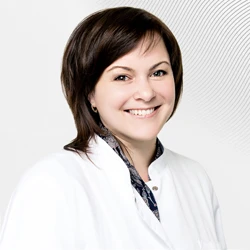Statistics on colorectal cancer (CRC) in the United States indicate a downward trend in the incidence and mortality of CRC. The sharp decline in the incidence of colorectal cancer in the United States may be due to the effectiveness of colonoscopy screening.
The sharp decline in the incidence of colorectal cancer in the United States may be due to the effectiveness of colonoscopy screening.
Statistics on colorectal cancer (CRC) in the United States indicate a downward trend in the incidence and mortality of CRC.
We present to your attention some of the results of the analysis conducted by Rebecca Siegel and her colleagues at the American Cancer Society, published on March 17, 2014 in the Cancer Journal for Clinicians, as well as comments from EMC proctologists on the CRC problem in Russia.
Overall, over the last decade (from 2001 to 2010) in the United States, the death rate from CRC decreased by about 3% per year, and the overall incidence of CRC also decreased, by an average of 3.4% per year.
EMC: "In Russia, the incidence of colorectal cancer is increasing every year: the increase in incidence in 2013 was almost 2%. According to the report "The state of oncological care for the Russian population in 2013," compiled by the Herzen Moscow Research Institute of Medical Sciences, 5.6% of patients registered in oncological institutions are diagnosed with colon neoplasm, and 4.3% of patients with rectum neoplasm. High rates of neglect (stages III-IV) were noted in the diagnosis of neoplasms of the rectum (in 48.9% of cases) and colon (55.2% of cases). What does this mean? These tumors can be detected during rectosigmoscopy or colonoscopy, and if these studies were regularly conducted at an age when the risk of developing this type of cancer begins to increase (i.e. after 50 years), the tumor could be "caught" at an early stage – when there are much more opportunities to help the patient. We can even say more – CRC is 95% preventable."
American researchers emphasize the sharp decline in the incidence of CRC among the elderly over 65 years of age: in the period from 2001 to 2008, the decrease was 3.6%, and from 2008 to 2010 — 7.2%. "This decrease is probably due to higher screening rates in this age group," R.Siegel told the Medscape portal. Medscape Medical News. For adults aged 65 and over, there are fewer cost-related barriers to screening, as they are eligible for Medicare insurance, which has covered CRC screening since 2001, even for those at moderate risk of developing the disease. In 2010, 64% of adults over the age of 65 reported undergoing CRC screening, compared with 55% of adults aged 50 to 64. Although CRC screening can be carried out by various tests, the dramatic decrease in incidence in recent years is largely due to the diagnostic effectiveness of colonoscopy. The frequency of colonoscopy increased from 2000 to 2010, while the use of fecal immunochemical analysis and rectosigmoscopy decreased during the same period.
"Colonoscopy can prevent CRC by detecting and removing precancerous polyps at an early stage, when there is a better chance of successful treatment. Stool analysis is very good for early diagnosis of cancer, but it is not able to reduce the incidence by detecting precancerous diseases," says R. Siegel.
EMC: "Colonoscopy is considered one of the most effective and reliable screening studies in oncology and is included in government cancer prevention programs in many countries. In Russia, unfortunately, not yet. The program of preventive medical examinations provides for a stool analysis for latent blood (ACCC) as a screening for CRC, which should be performed once every three years, and if the test is positive, the patient must be referred for a colonoscopy. With positive ACC, the probability of having a colon polyp is 30-45%, and the probability of colon cancer is 3-5%. Therefore, EMC coloproctologists recommend colonoscopy as a screening for colorectal cancer."
In the late 1940s and early 1950s, CRC was considered the most common cause of cancer death. Nowadays, it has moved to the third place in terms of the frequency of deaths, after lung cancer and prostate cancer in men and breast cancer in women. This is due, among other things, to the introduction and dissemination of screening tests for early detection of cancer and improvement of treatment outcomes.
"Colorectal cancer is one of only two types of cancer that we can actually prevent through screening (the other type is cervical cancer), comments R.Siegel: Unfortunately, many adults, which is about 23 million Americans who should be screened for colorectal cancer, have never been tested. It is necessary to spread the word about how important this screening is to save lives." A press release from the American Cancer Society (ACS) indicates that screening coverage for adults aged 50 to 75 increased from 19% in 2000 to 55% in 2010. The goal is to increase screening coverage to 80% by 2018.
"It is important to note that the guidelines of the American Cancer Society (ACS) recommend screening for colorectal cancer from the age of 40 for adults whose first-degree relatives have been diagnosed with one or more polyps before the age of 60," notes R. Siegel. Follow-up is important for this risk group.
EMC: "Currently, there are no problems with colonoscopy in municipal medical institutions, both according to absolute indications if the patient has characteristic symptoms of intestinal disease, and for the purpose of prevention. The doctors of the EMC Coloproctology Clinic adhere to the recommendations of the American Cancer Society for the early detection of CRC, which contain instructions on the timing of the first screening in patients at risk.:
- If the patient's first-line relatives were diagnosed with colon adenoma before the age of 60, they are recommended to have an early (up to 40 years) colonoscopy If the patient has relatives with CRC, the first colonoscopy should be performed 10-15 years earlier than the age of the relative who was diagnosed with the "youngest" CRC in the family.
We hope that regular preventive examinations of people at risk for this disease will help to control the incidence of CRC in Russia."
Was this information helpful?
Questions and answers
Ask a Question










.webp)
.webp)


.webp)

.webp)




.webp)


.webp)
